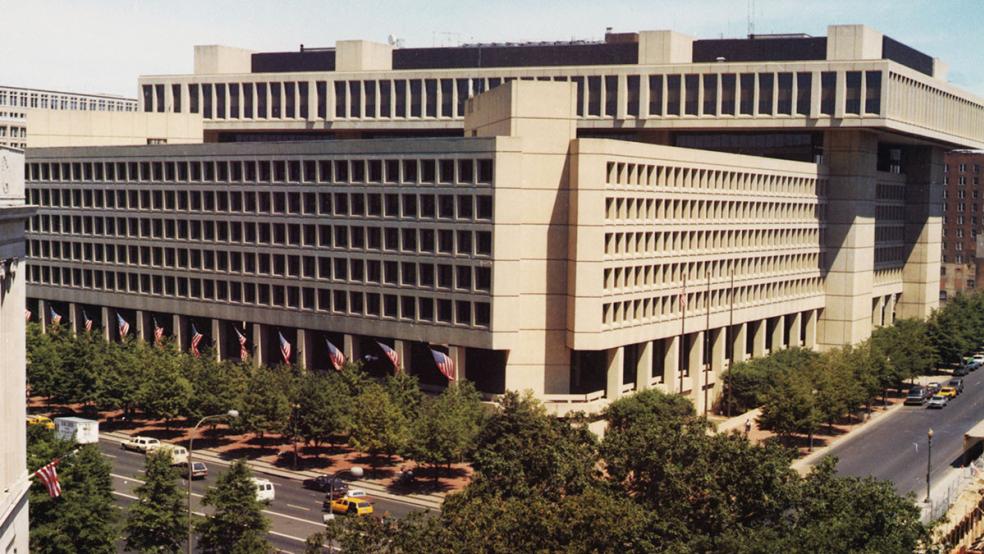The FBI’s once imposing fortress-like headquarters in downtown Washington is in shambles today, with netting hanging from the façade to prevent broken concrete from hitting passing tourists. Inside, much of the space is decrepit and technically obsolete.
First opened in June 1974 during the Gerald Ford administration, the J. Edgar Hoover Building is so inadequate that many of the bureau’s 9,500 headquarters special agents and employees must operate out of nearly a dozen temporary office spaces throughout the region, adding millions of dollars to the agency’s annual operating costs.
Related: Trump’s Legacy — Nominees Must Prove They Know the Difference Between Right and Wrong
Six years ago, the Government Accountability Office (GAO) issued a scathing report saying the structure lacked adequate security against terrorist attacks and had grown “obsolete, inefficient” and prohibitively expensive to modernize.
So it came as a shock to many this week when FBI and General Services Administration (GSA) officials announced that they were pulling the plug on a nearly decade-long effort to build a nearly $2 billion, state of the art FBI headquarters in suburban Washington.
Ostensibly, the GSA blamed the decision on an intractable dispute with Republican lawmakers over funding, and there is some truth to that. But others saw it as just the latest example of a dysfunctional federal government unable to close a deal on an important government project — even one with huge national security implications.
Related: Trump FBI Nominee’s Corporate Work Could Exclude Him From Some Probes
Maryland Gov. Larry Hogan, a Republican, called the decision to cancel the project very disappointing and highly frustrating. “I’m frustrated with our leaders in Congress and I’m frustrated with the administration’s position, but it’s not surprising,” he told reporters. “It seems like just typical Washington.”
The decision to end the project was made at a time when the Trump administration and congressional Republicans are in disarray and seemingly incapable of moving any important element of their agenda. Both the GSA and the FBI are operating under transitional leadership, which tends to discourage important decision-making. And the White House appears paralyzed as Trump and his advisers struggle to deal with the mushrooming scandal over possible campaign collusion with the Russian government in 2016.
As The Washington Post noted this week, Trump has been caught up in a high-profile dispute with the FBI over the special counsel’s probe of the Russian connection and Trump’s decision to fire former FBI director James B. Comey. The former FBI chief was a major advocate of a new headquarters building.
Related: McConnell Tries Business as Usual Amid a Trump Team Disaster
Congress had appropriated some but not nearly all of the money needed for the project, while local and state officials and real estate developers, architects and engineers spent years and tens of millions of dollars attempting to woo the FBI and the GSA to one of three “final” locations for a new headquarters — in Greenbelt and Landover, Maryland, and Springfield, Virginia.
Yet in a stunning slap in the face to just about every stakeholder who had the misfortune of becoming entangled in the star-crossed project, the FBI and acting GSA administrator Timothy Horne revealed on Tuesday that they were jettisoning all of the proposals and essentially returning to square one.
Former President Barack Obama had requested $1.4 billion toward construction of a new headquarters. GSA officials blamed their decision on a $882 million “funding gap” largely of Congress’s making. The plan was also contingent on a land swap, in which the GSA — the federal government’s chief landlord — would relinquish the FBI’s downtown headquarters land to a developer in return for one of the suburban sites.
Related: How Homeland Security Wasted Millions on Software That Doesn’t Work
The turning point came last month, when House appropriators inexplicably rescinded $200 million from the project. That decision stunned Virginia officials and lawmakers and drew an outcry from real estate developers and businessmen who had collectively spent as much as $50 million, by one estimate, to compete for the contract.
“Moving forward without full funding puts the government at risk for cost escalations and the potential reduction in value of the J. Edgar Hoover property that developers were to receive as part of this procurement,” GSA explained.





